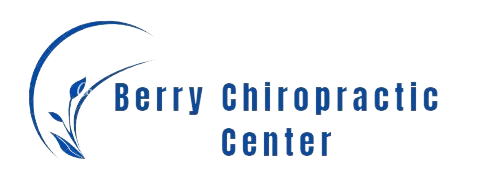Scoliosis, a sideways spinal curvature, is traditionally addressed with physical therapy, surgery, or bracing. Yet, the potential of chiropractic care in managing this condition is a topic of ongoing medical debate. The non-invasive techniques used by chiropractors, which emphasize spinal alignment and flexibility, may alleviate scoliosis symptoms and enhance patient quality of life. This invites consideration of the evidence, testimonials, and possible implications for scoliosis treatment.
Understanding Scoliosis: The Basics
Scoliosis, a spinal condition affecting millions globally, is characterized by an ‘S’ or ‘C’ shaped sideways spinal curve. Typically diagnosed during childhood or early adolescence, its cause remains largely unknown, debunking the myth of heavy backpacks or poor posture as sources.
Contrarily to the belief that scoliosis restricts an active lifestyle, regular physical activity proves beneficial. Tailored exercise routines, focusing on back muscle strengthening and flexibility enhancement, are recommended for scoliosis patients. These routines aim to manage symptoms and decelerate curve progression, not to cure scoliosis or straighten the spine.
Understanding scoliosis is crucial to debunk myths and manage it effectively, enhancing overall health and minimizing daily life impacts.
Overview of Chiropractic Care
Chiropractic care, deeply rooted in Chiropractic History, is a non-invasive treatment option for scoliosis. This approach operates on three core principles: the body’s innate self-healing and self-regulating capabilities, the nervous system as the primary body function controller, and the detrimental impact of nervous system interferences. The practice encompasses diagnosis and treatment of health issues affecting muscles, nerves, and bones through hands-on spinal manipulation and alternative methods. It posits that correct alignment of the musculoskeletal structure, especially the spine, fosters the body’s self-healing without needing surgery or medication. While primarily focused on spinal subluxation treatment, chiropractic care’s potential in scoliosis management is an emerging area of research. Additionally, learning how spinal decompression therapy can complement scoliosis care could provide additional relief for those suffering from this condition.
The Chiropractic-Scoliosis Connection
Understanding the relationship between chiropractic care and scoliosis is crucial. Chiropractic treatments can potentially manage and alleviate scoliosis symptoms. This understanding aids in exploring the expected outcomes and benefits of chiropractic interventions for scoliosis patients. The efficacy and relevance of chiropractic care in scoliosis management underscore this discussion.
Understanding Scoliosis
In understanding the connection between chiropractic care and scoliosis, it’s essential to comprehend scoliosis – a spinal disorder defined by an abnormal lateral curvature of the spine. The severity of scoliosis ranges from mild to extreme, affecting overall health and life quality.
Key scoliosis insights include:
- Scoliosis prevention: Scoliosis, influenced by genetics and growth spurts, isn’t entirely preventable. However, early detection facilitates better management.
- Genetic factors: Scoliosis frequently has a hereditary aspect, implying a notable genetic factor. A family history of the condition elevates risk.
- Onset: Scoliosis can manifest at any age, but it’s most frequently identified during the growth spurts of adolescence.
Chiropractic Treatment Approaches
In chiropractic care for scoliosis, various methods exist. Key is adjustment frequency, impacting treatment effectiveness. Tailored programs, considering individual patient conditions, can enhance spinal alignment and flexibility. Adjustment frequency is monitored for maximum benefit and minimal discomfort. Patient comfort is vital, hence continual refinement of techniques to reduce pain. Chiropractors use non-invasive techniques to boost treatment efficacy, promoting a holistic approach to scoliosis management.
Outcome and Benefits
Chiropractic care’s outcomes and benefits for scoliosis significantly enhance patient health and well-being. These benefits include:
- Scoliosis Prevention: Regular chiropractic adjustments aid scoliosis detection and prevention, particularly during children’s growth spurts.
- Pain Management: Non-invasive chiropractic techniques manage scoliosis-associated pain, improving posture, reducing muscle tension, and increasing mobility.
- Lifestyle Modifications: Chiropractic care advises patients to implement lifestyle changes such as exercise and dietary modifications, promoting spine health.
Research on Chiropractic and Scoliosis
Scientific literature presents differing results on the effectiveness of chiropractic treatment for scoliosis. Scoliosis affects 2-3% of the population, or six to nine million people, in the United States alone.
Historically, chiropractic treatment has shown inconsistent results in scoliosis care. Early studies reported varied outcomes, with some showing temporary spinal curvature improvement and others indicating no effect. These studies, however, often had methodological flaws and small sample sizes, affecting their reliability.
Recent research has become more rigorous. It suggests that chiropractic care, combined with physiotherapy and lifestyle changes, can positively impact scoliosis progression.
Despite these findings, debate continues due to scoliosis’s complexity and the absence of standardized chiropractic treatment protocols. The effectiveness of chiropractic interventions must continue to be evaluated, considering the varying needs and responses of scoliosis patients.
Benefits of Chiropractic Treatment
Chiropractic treatment offers affordability, making it a cost-effective alternative to surgery or long-term medication use. Insurance coverage for chiropractic care enhances its financial viability. This non-invasive treatment method involves lower risk than surgical interventions.
Three key benefits of chiropractic treatment include:
- Pain Reduction: Chiropractic adjustments improve spinal alignment, reduce nerve irritation, and alleviate scoliosis-associated discomfort.
- Improved Mobility: Regular chiropractic care enhances joint flexibility and range of motion, often compromised in scoliosis patients.
- Better Posture: Chiropractic treatment corrects postural imbalances, promoting an upright stance and improved spinal health.
Potential Risks and Drawbacks
Chiropractic treatment for scoliosis presents both benefits and potential risks. Mild side effects may include adjustment discomfort, while serious risks encompass spinal injury. An in-depth risk analysis enhances understanding of this scoliosis treatment approach.
Understanding Chiropractic Risks
Exploring chiropractic treatment risks for scoliosis requires understanding the potential dangers and disadvantages often surrounded by misconceptions and misinformation. Analyzing chiropractic controversies and legal implications provides clarity.
- Chiropractic Controversies: Critics question the scientific evidence backing chiropractic treatments for scoliosis, challenging their safety and effectiveness.
- Legal Implications: Chiropractors may face malpractice claims for treatment complications or failure to refer patients to specialists, making the legal landscape intricate.
- Potential Risks: Risks comprise treatment discomfort, temporary headaches, fatigue, and, rarely, severe complications like stroke.
Comprehending these risks enables informed decisions about scoliosis chiropractic care.
Drawbacks of Chiropractic Treatment
Chiropractic treatment for scoliosis, despite potential benefits, has significant drawbacks. High costs are a primary concern, with patients needing regular, long-term visits, leading to large financial burdens. Insurance coverage for chiropractic services varies, and scoliosis treatments may not be fully covered, resulting in out-of-pocket expenses. Moreover, chiropractic care may not rectify severe scoliosis, necessitating additional invasive procedures. Risks include discomfort from adjustments and possible condition exacerbation. Therefore, the drawbacks of chiropractic treatment for scoliosis demand careful consideration.
Chiropractic Techniques for Scoliosis
Chiropractic alternatives for scoliosis management include spinal manipulation, flexion-distraction technique, and the activator method.
Spinal manipulation applies controlled force to a spine joint, enhancing function and easing pain, thus reducing scoliosis-associated rigidity.
The flexion-distraction technique, a non-thrusting spinal manipulation type, corrects spine curvature by stretching the spine.
The activator method uses a handheld device to impart a gentle impulse force to the spine, aiming to restore motion to a specific spinal vertebra.
The effectiveness of these techniques varies per patient and depends on scoliosis type and severity, necessitating tailored treatment plans.
Chiropractic alternatives underscore spinal health’s importance in overall well-being and offer a holistic approach to scoliosis prevention and management.
What to Expect From a Chiropractic Session
In chiropractic sessions for scoliosis, the process begins with a tailored, detailed assessment and diagnosis by the chiropractor. Techniques specific to the patient’s condition are used. Post-session care is critical and includes guidance to sustain alignment and advance healing. One important consideration for a successful chiropractic experience is knowing what to wear. Choosing the right attire for your chiropractic session can make the process more comfortable and effective. For helpful tips on how to dress for your chiropractic appointment, you can check out this guide on what to wear to a chiropractic appointment.
Understanding Chiropractic Techniques
In a scoliosis session, chiropractic techniques like spinal manipulation, mobilization, and postural education are employed. Rooted in the philosophy that the body self-heals when the skeletal system aligns correctly and the nervous system functions optimally, chiropractors utilize these techniques. Spinal manipulation involves applying controlled force to a joint of the spine using hands or a device. Mobilization consists of low-velocity movement, stretching, and exercises to enhance muscles and joints’ range of motion. Postural education provides guidance on correct postures during activities to minimize spinal stress. Chiropractor qualifications ensure the safe and effective execution of these techniques.
Assessment and Diagnosis
Assessment and diagnosis are essential steps before applying chiropractic techniques for scoliosis. Scoliosis detection involves physical and neurological examinations, including spine, neck, and lower back checks, reflexes and muscle weakness tests, and neurological damage indicators. Genetic factors, often leading to familial scoliosis, are also considered. Confirmation and detailed view of spinal curvature are obtained via advanced imaging techniques like X-rays or MRIs. This collected data is crucial for creating an effective scoliosis chiropractic treatment plan.
Post-Session Care Tips
Post-scoliosis chiropractic care requires adherence to dietary, exercise, and rest guidelines for optimal results and minimized discomfort.
- Diet: Nutrition significantly impacts post-session care. Calcium and vitamin D-rich diets, along with lean proteins, fruits, and vegetables, support spinal health and aid tissue repair and inflammation reduction.
- Exercise: Regular low-impact activities like walking or swimming promote spinal flexibility and strength, while high-impact exercises may worsen spinal curvature.
- Rest: Quality sleep and avoidance of strenuous activities post-session are crucial for recovery.
Comparative Analysis: Chiropractic Vs. Traditional Treatments
Scoliosis management involves comparing chiropractic interventions and traditional treatments. Chiropractic care, focusing on spinal alignment, offers a holistic approach, potentially reducing pain. Traditional treatments, including bracing and surgery, aim to halt or correct curvature progression. However, these may not address underlying musculoskeletal imbalances and can be invasive and costly. Treatment choice depends on the patient’s unique condition, financial ability, and comfort level.
Real-Life Success Stories
Chiropractic care has shown significant improvements in scoliosis patients, as illustrated in several real-world success cases.
- Case 1: A teenager suffering from scoliosis-related pain and mobility issues experienced a substantial decrease in discomfort and improved posture after undergoing chiropractic treatment for a few months. The treatment had a positive impact on her emotional state and overall quality of life.
- Case 2: A middle-aged office worker with scoliosis-related back pain saw remarkable pain reduction after regular chiropractic sessions. This allowed him to resume his daily activities, demonstrating the therapeutic potential of chiropractic care.
- Case 3: An elderly woman with scoliosis, who had insomnia due to pain, experienced relief and improved sleep patterns through chiropractic adjustments. This exhibited the broad impact of chiropractic treatment on overall well-being.
These cases highlight the potential of chiropractic therapy for scoliosis, although outcomes can vary. Personalized treatment plans are crucial for optimal results.
How to Find a Qualified Chiropractor
To locate a qualified chiropractor, verify credentials, ensuring necessary skills, training, and chiropractic care experience. Research potential chiropractors’ backgrounds, checking for malpractice history and disciplinary actions. Consider tenure, especially with scoliosis cases, as more experience may yield better results.
Assess the chiropractor’s communication style, ensuring comfort in discussing your condition and concerns. Ideal chiropractors respect your decisions, refrain from pressuring you into unwanted treatment plans, and show genuine interest in your wellbeing.
Evaluate practical factors like location and office hours for convenience. Verify the chiropractor’s hospital affiliations, with preference for high-quality hospitals due to their better survival rates and fewer complications. These steps will aid in finding the right chiropractor for effective scoliosis management.
Tips for Managing Scoliosis at Home
Scoliosis management at home involves specific exercises, a balanced diet, and good posture. Exercise routines, recommended by chiropractors or physical therapists, aim to improve posture, strengthen back muscles, and increase flexibility. Adopting a balanced diet aids scoliosis management by maintaining a healthy weight, ensuring adequate calcium and vitamin D intake for bone health, and avoiding inflammation-exacerbating foods. Maintaining correct posture while sitting, standing, or sleeping helps manage scoliosis symptoms. This involves using supportive chairs and mattresses, keeping the spine aligned, and avoiding slouching.
Frequently Asked Questions
How Long Does a Typical Chiropractic Treatment for Scoliosis Last?
Chiropractic scoliosis treatment duration depends on individual needs, often extending over several months. Factors such as treatment costs and pain management significantly impact the therapeutic process length.
Will Health Insurance Cover My Chiropractic Treatment for Scoliosis?
Health insurance’s coverage of chiropractic treatment for scoliosis varies. The coverage extent hinges on policy limitations and exclusions. Consult your insurance provider for coverage understanding.
Are There Age Restrictions for Chiropractic Treatment of Scoliosis?
Universal age restrictions do not exist for chiropractic scoliosis treatment. Nonetheless, age and scoliosis severity determine treatment frequency and methods, subsequent to a comprehensive chiropractic examination and diagnosis.
Can Chiropractic Care Prevent Scoliosis From Progressing in Children?
Chiropractic care, while unable to entirely halt scoliosis progression in children, can potentially manage symptoms and enhance life quality.
What Lifestyle Changes Should Accompany Chiropractic Treatment for Scoliosis?
Undergoing chiropractic treatment for scoliosis necessitates lifestyle alterations, notably dietary shifts and consistent exercise. A nutritious diet promotes overall wellbeing, while exercise enhances posture and spinal strength.






